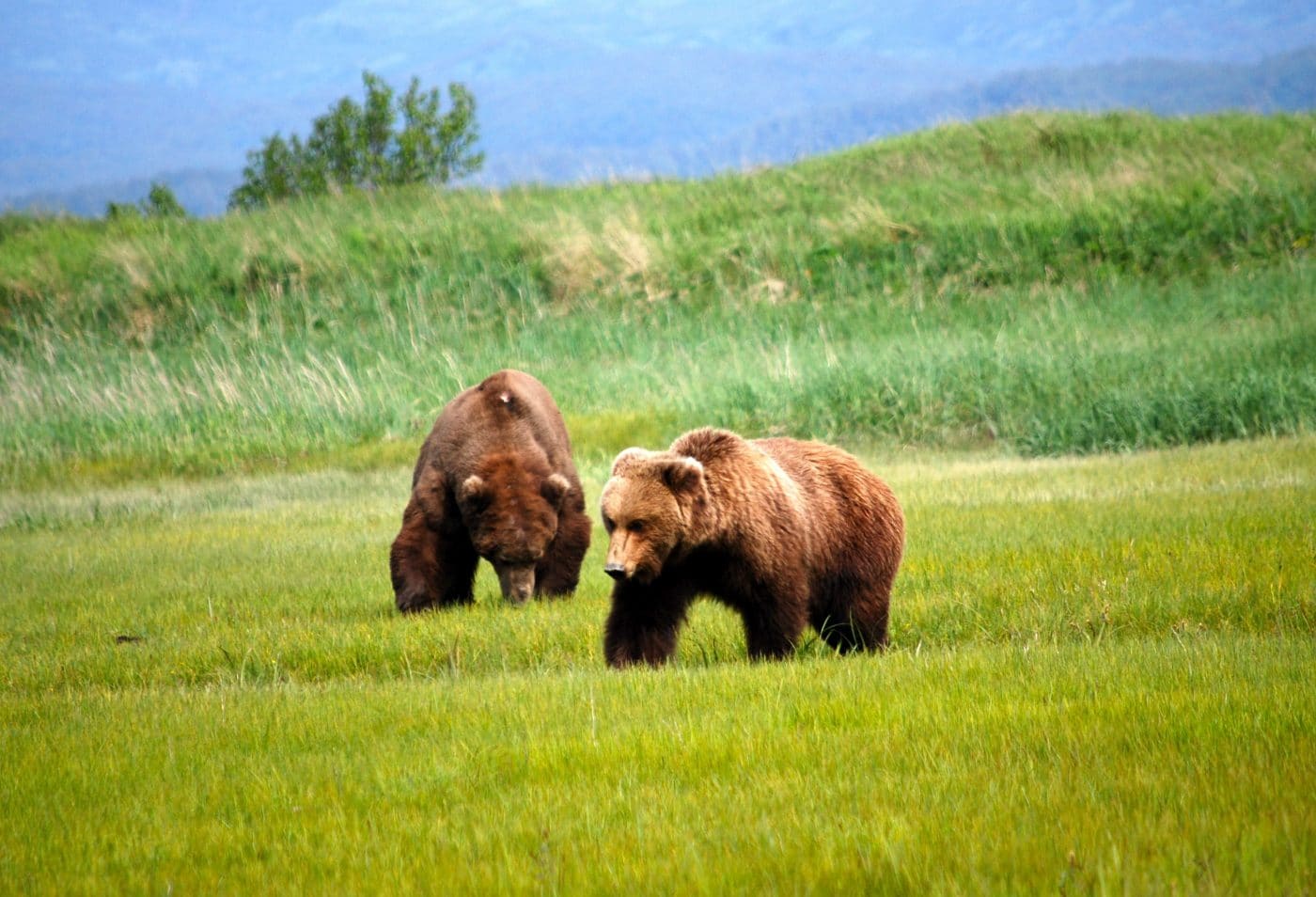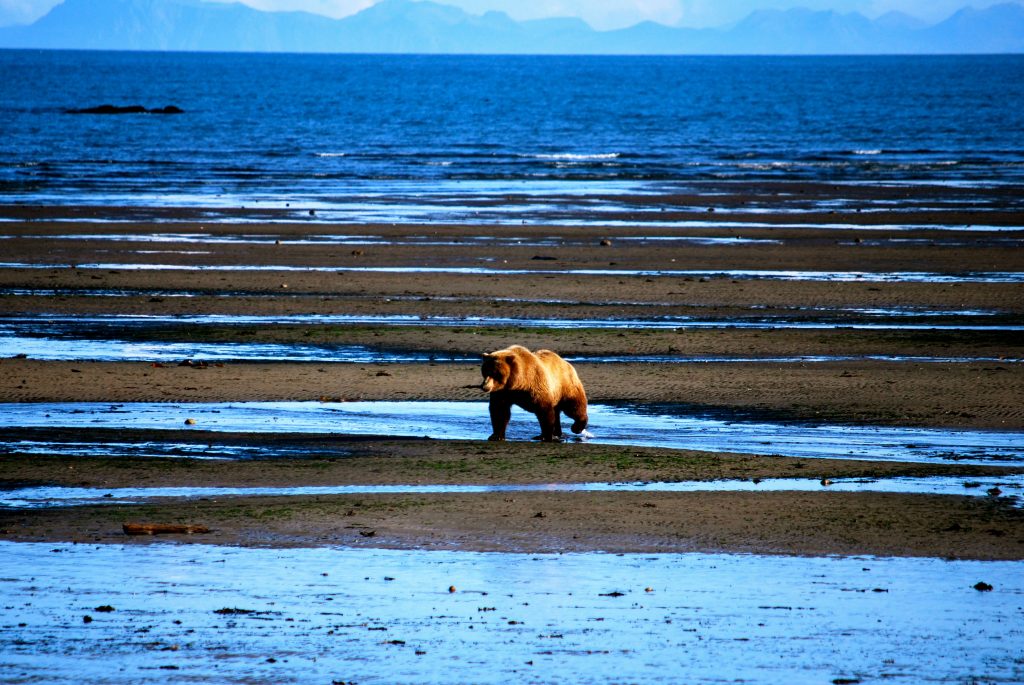
Alaska’s bears are quite possibly the most popular attraction in the entire state. Whales breaching in graceful arcs are amazing and glaciers are icily gorgeous, sure. But bears? North America’s largest land mammal demands attention if only for the stories surrounding its fierce nature and frenetic feeding habits. Simply put, bears are stars.
Most Alaska visitors usually pass through Anchorage on their way to explore the rest of the state, and those who are familiar with reality television may expect a brown or black bear to come charging from the bushes at their airplane gate, jaws snapping and paws clapping on the tarmac. In reality, bears inhabiting the 49th state live relatively peaceful lives, eating, sleeping, and rearing cubs in the forestland, tundra, and coastal regions. Three species of bear reside in Alaska: black, brown, and polar. While polar bears can be found in arctic regions like Barrow and Prudhoe Bay, black and brown bears are just about everywhere else, from Fairbanks to Ketchikan. If you’re looking to see these magnificent creatures outside of a zoo or wildlife center you’re in luck. Alaska’s bear-viewing is a solid part of the travel and tourism industry.
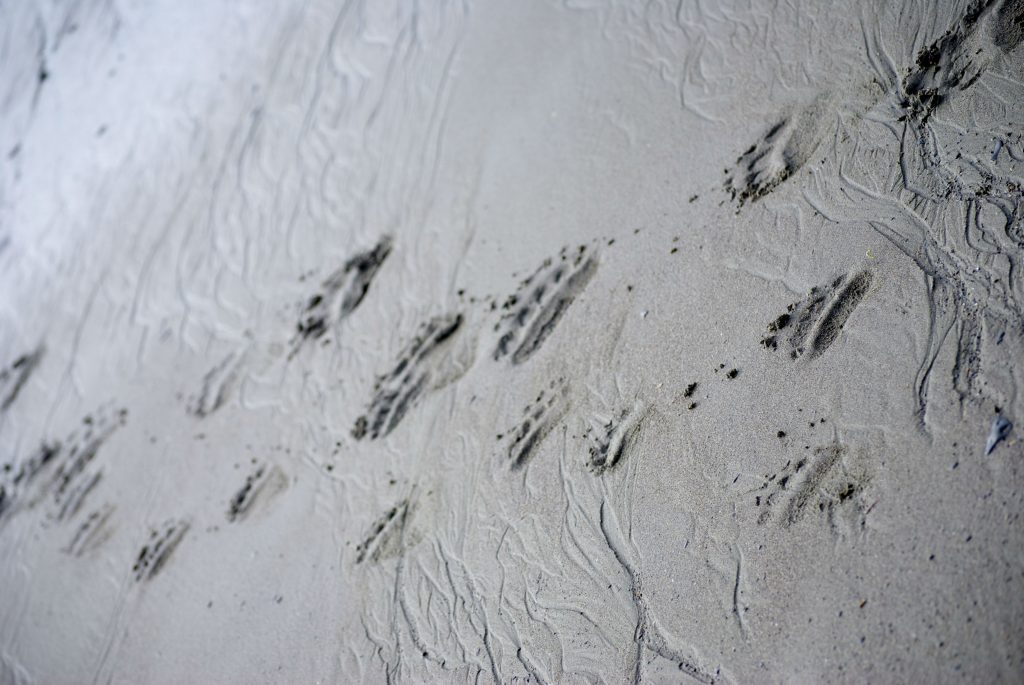
The best time to view bears is during the spring and summer months between May and August (unless you want to see polar bears, then the fall and winter months are better). An abundance of food drives brown and black bears from their dens in late April, sometimes with cubs in tow, to eat and grow fat for the next season of hibernation, sometime in late September or early October. A bear preparing for hibernation must add 20-30% of body weight back that was lost the previous winter, so nourishment is the highest priority next to protecting young.
A bear-viewing adventure in its truest form is undoubtedly one of the most incredible experiences an Alaska visitor could hope to witness. Imagine bears fishing for salmon in a rushing river or grazing on tender spring grasses like cows in a field, miles from any big city. Most tourists who take a trip to watch bears agree that the concept of a bloodthirsty, ravenous creature hell-bent on eating a human goes right out the window after a few hours observing these animals doing the only thing they know how to do – survive.
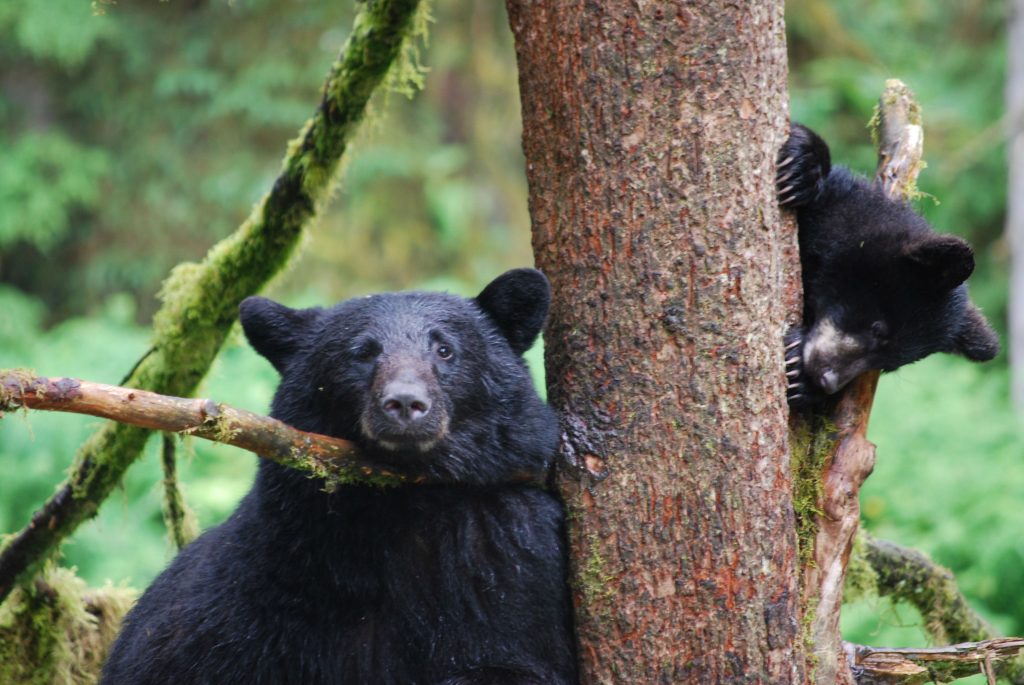
There are several options for spring and summer bear viewing available for Alaska visitors, but anyone considering a trip to these remote and rugged areas should remember a few things:
- Participants should be able to hike up to two or three miles on uneven terrain.
- Weather can alternate between warm and sunny or cold and rainy (or even snowy). Layers and appropriate weather-proof gear is a must. Some tour companies ask visitors to wear clothing that is not brightly colored so as not to attract the bears’ attention. Check ahead of your trip.
- Many trips require a ride of up to one hour or more in a small plane, often referred to as a “bush” plane. Seating no more than a half-dozen passengers, these are nimble aircraft that can land on beaches or gravel landing strips. Visitors should be comfortable in small, cramped quarters.
- Typically, no weapons or bear spray is allowed. Guides are trained to recognize and be acutely aware of bears’ habits and behavior, and they are in charge.
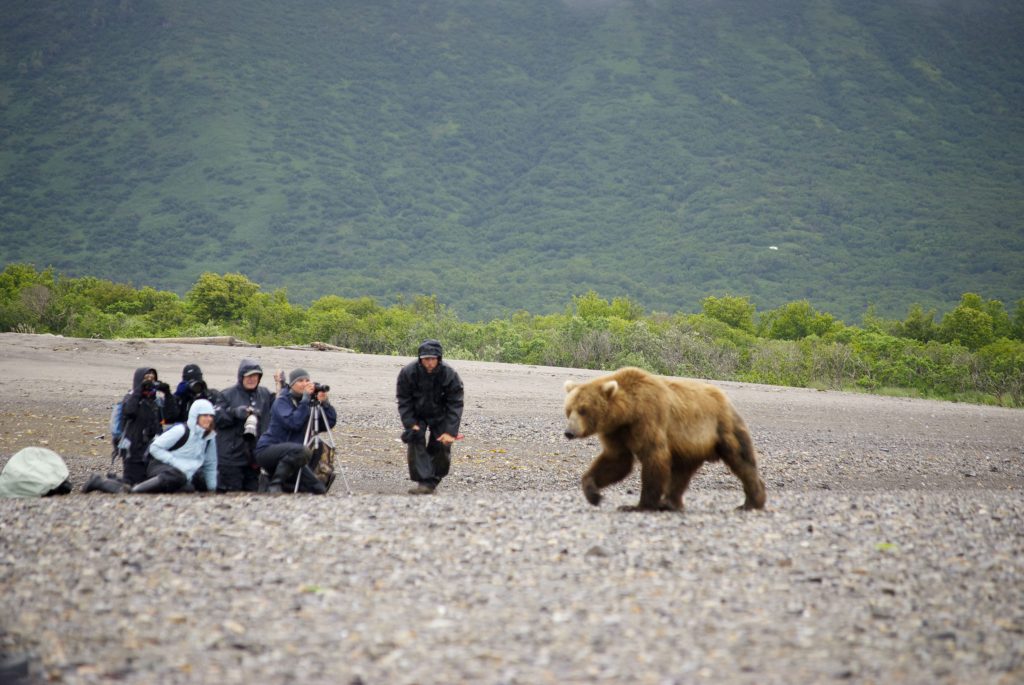
Bear Viewing Options
Anchorage
Rust’s Flying Service offers three different packages to view bears in Katmai National Park, one of the most scenic and popular places to see brown bears in action. Ranging between three and eight hours in length, the tours each provide a different angle on bears and their habitats. Overnight package additions are available.
www.flyrusts.com/bear-viewing.
www.anchorage.net
Homer
Hallo Bay Bear Camp is located on the shores of Katmai National Park, but far from the busy Brooks Falls area where so many go. This environmentally sensitive company has been operating in a permit-access area for 20 years, and is by far the most intimate setting for those wanting to see bears close up and personal. Overnight guests stay in tent cabins and receive meals, guided hikes, and ample photo opportunities. Day guests land on the beach and hike to a number of different areas where bears congregate.
www.hallobay.com.
Wrangell
This town in southeastern Alaska is on Wrangell Island, near the mouth of the Stikine River. It is near those waters that AnAn Wildlife Observatory offers visitors viewing opportunities for both black and brown bears fishing for salmon in historic AnAn Creek. Reached via a one-hour boat ride and 30 minute hike to the Forest Service-managed observatory, guests spend a few hours watching bears, bald eagles, and other wildlife before heading back to town. https://alaskawaters.com/activities/anan-bear-wildlife-observatory/.
Denali National Park
Perhaps the simplest and least expensive way to see brown bears (sometimes called grizzlies in Interior Alaska) is by visiting Denali National Park and traveling its nearly 100-mile road that bisects the park. With few private vehicles permitted beyond Mile 17, wildlife has free reign here, including bears. Visitors see bears through the windows of a National Park Service bus or while hiking the tundra on their own, and it is the rare journey that doesn’t include at least one brown bear.
www.nps.gov/dena.
All photos courtesy of Erin Kirkland.

